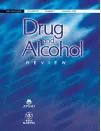| Titre : | 5-(2-aminopropyl)indole: A new player in the drama of 'legal highs' alerts the community (2015) |
| Auteurs : | M. KATSELOU ; I. PAPOUTSIS ; P. NIKOLAOU ; C. SPILIOPOULOU ; S. ATHANASELIS |
| Type de document : | Article : Périodique |
| Dans : | Drug and Alcohol Review (Vol.34, n°1, January 2015) |
| Article en page(s) : | 51-57 |
| Langues: | Anglais |
| Discipline : | PRO (Produits, mode d'action, méthode de dépistage / Substances, action mode, screening methods) |
| Mots-clés : |
Thésaurus mots-clés DROGUES DE SYNTHESE ; TOXICOLOGIE ; PHARMACOLOGIE ; TOXICITE ; CHIMIE ; PREVALENCE ; INTOXICATION ; ANALYSE CHIMIQUEThésaurus géographique EUROPE |
| Mots-clés: | 5-IT |
| Résumé : |
Issues: 5-(2-aminopropyl)indole (5-IT) is a new psychoactive substance, a 'legal high', that recently invaded the drug arena in Europe and has already led to numerous intoxications and fatalities. Knowledge upon its pharmacology and toxicity is non-existent or restricted; the only available information involves very few published scientific articles, official reports from the European Monitoring Centre for Drugs and Drug Addiction and drug abusers' experiences expressed in online drug forums.
Approach: A review of the existing knowledge on 5-IT is reported, concerning its chemistry and synthesis, its pharmacological and toxicological aspects, as well as information concerning the fatal and toxic consequences of its use. The existing methodologies for the determination of 5-IT in biological and seized samples as well as its legal status are also presented. All the relative data were gathered through a detailed search of PubMed and the Internet. Key Findings: No original studies have investigated and/or confirmed its pharmacological properties, acute and chronic toxicity, physiological and behavioural effects or the dependence potential of the drug. Thus, it is difficult to specify the physical effects of 5-IT in humans. This drug is a phenomenon with global significance for public health as its use can lead to intoxication and fatalities. Implications: Significant information on 5-IT is provided for pharmacologists, toxicologists, forensic pathologists and regulatory authorities. Conclusion: 5-IT is a current public health challenge. Better international collaboration, effective legislation and continuous community alertness are needed to tackle this current growing phenomenon. |
| Domaine : | Drogues illicites / Illicit drugs |
| Sous-type de document : | Revue de la littérature / Literature review |
| Refs biblio. : | 26 |
| Affiliation : | Department of Forensic Medicine and Toxicology, Faculty of Medicine, National and Kapodistrian University of Athens, Athens, Greece |
| Cote : | Abonnement |
 Accueil
Accueil



